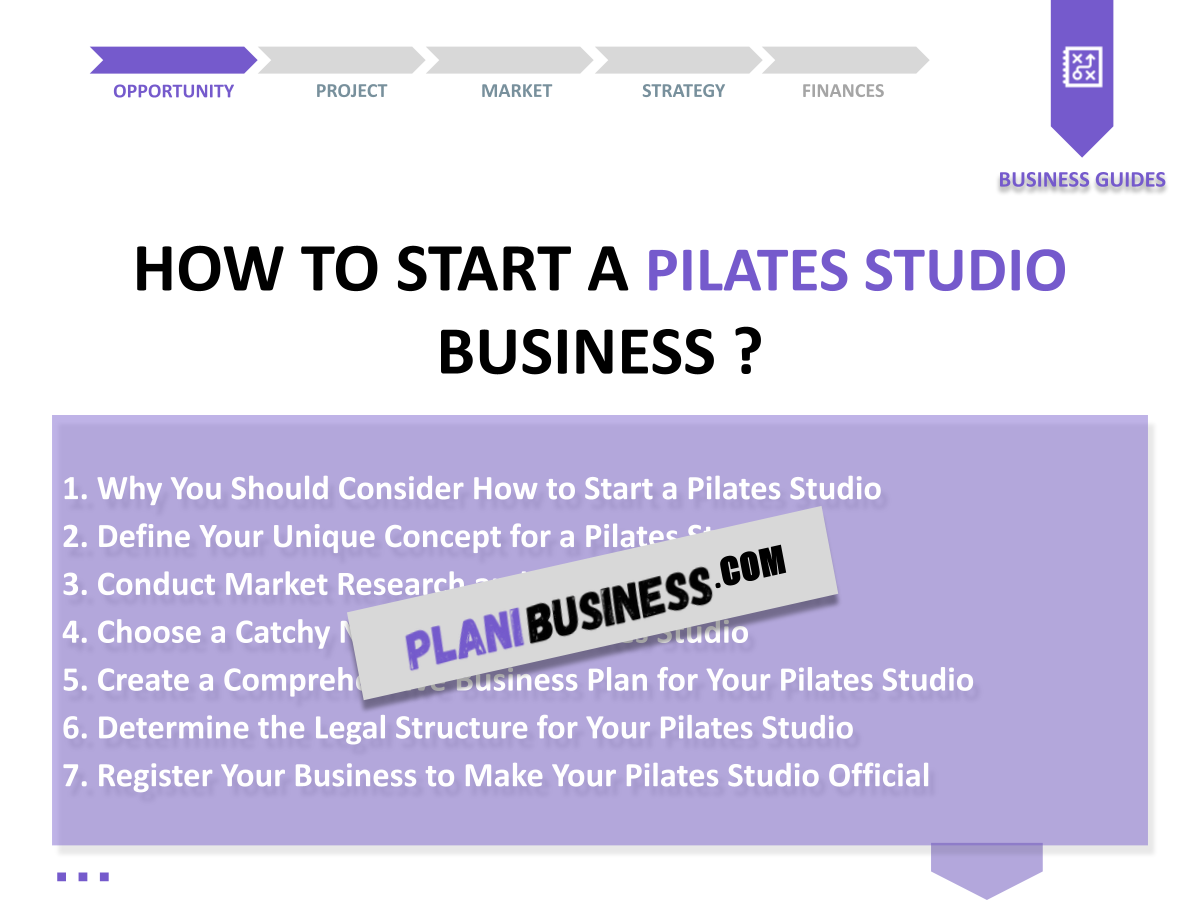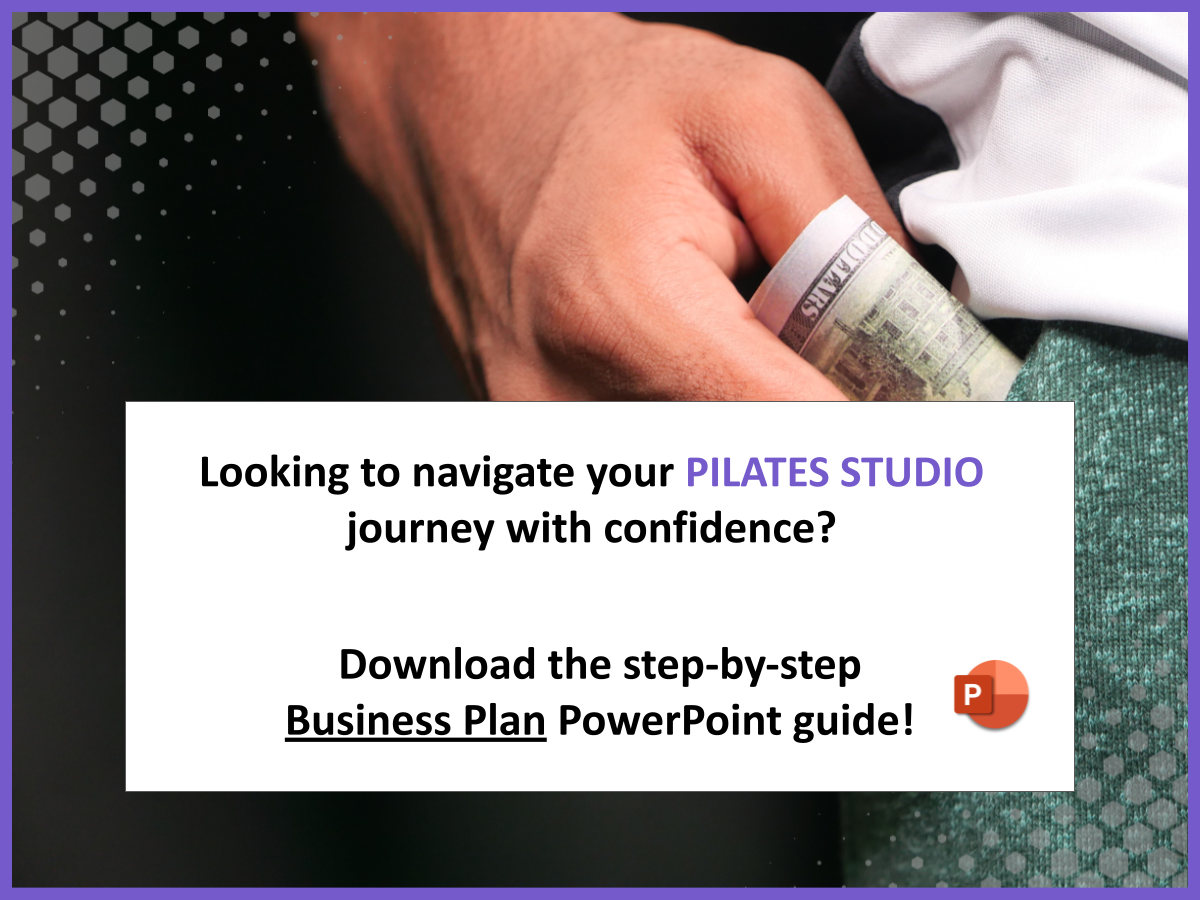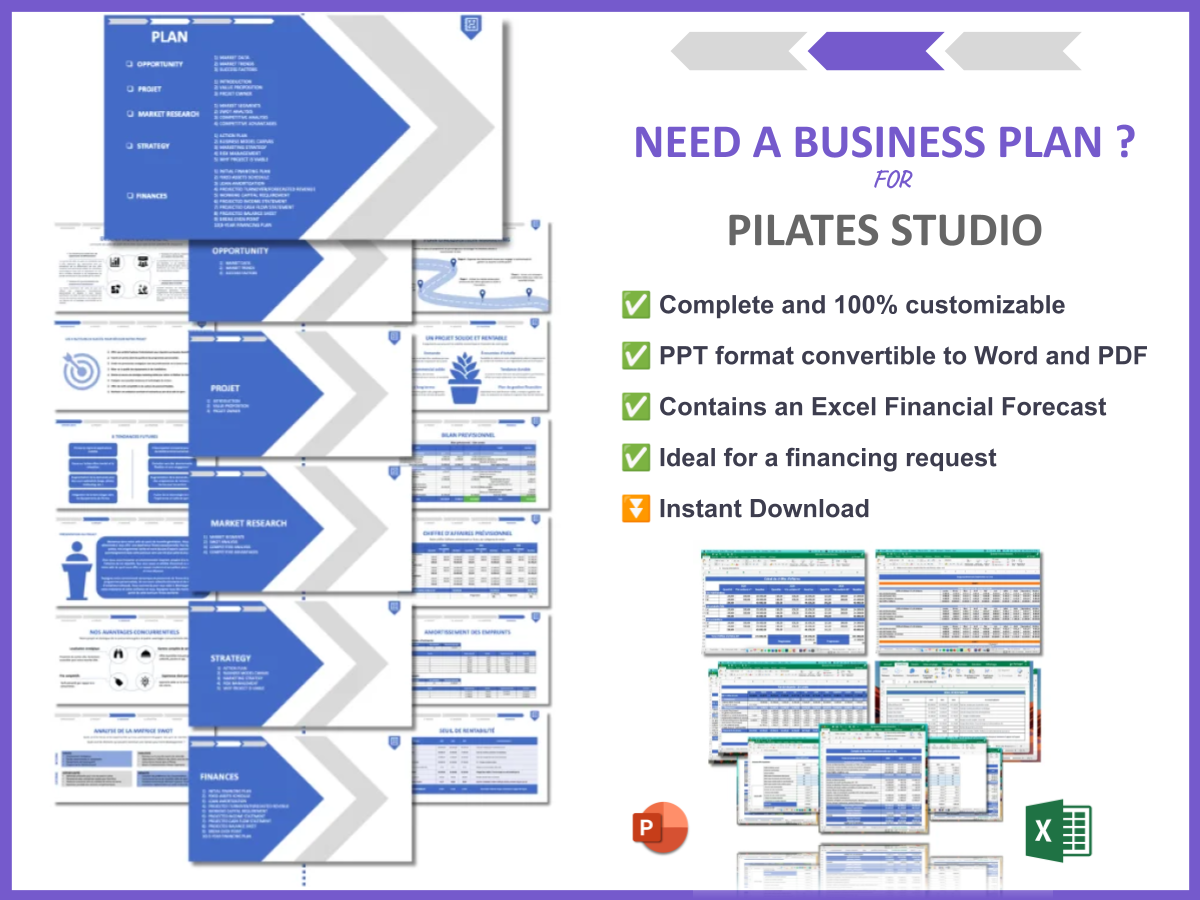Are you considering starting a new venture? If so, you’re not alone! The fitness industry is booming, and many people are turning to **Pilates** as a means of improving their health and wellness. In fact, the demand for **Pilates studios** has surged, with more individuals seeking low-impact workouts that enhance strength and flexibility. Understanding how to start a **Pilates studio** can be your ticket to tapping into this growing market. In this article, we will explore everything you need to know, from defining your unique concept to developing effective marketing strategies.
- Discover the essentials of crafting a successful business plan.
- Learn how to differentiate your studio in a competitive market.
- Understand the legal requirements for opening a fitness studio.
- Explore funding options and financial management systems.
- Establish a strong brand identity that resonates with your target audience.
- Implement effective marketing strategies to attract clients.
1. Why You Should Consider How to Start a Pilates Studio
Starting a **Pilates studio** can be an incredibly rewarding venture. The popularity of **Pilates** has been on the rise, with more people recognizing its benefits for both physical and mental well-being. Here are some reasons why you should consider jumping into this industry:
- Growing Demand: As more individuals prioritize health, the demand for fitness classes, particularly **Pilates**, is expected to grow by approximately 20% over the next few years.
- Community Engagement: A **Pilates studio** can serve as a hub for community wellness, bringing people together to achieve their fitness goals.
- Flexibility in Offerings: You can tailor your classes to various skill levels, from beginners to advanced practitioners, which allows you to cater to a wider audience.
By understanding the potential of this industry, you can position yourself for success. It’s not just about fitness; it’s about creating a space where people feel empowered and supported in their wellness journey.
2. Define Your Unique Concept for a Pilates Studio
Before diving into the logistics, take some time to define what makes your **Pilates studio** unique. This concept will guide all your decisions moving forward. Here are some steps to help you clarify your vision:
- Identify Your Niche: Think about what sets you apart from other studios. Will you focus on a specific demographic, such as seniors or athletes?
- Develop Signature Classes: Create classes that reflect your studio’s identity. Perhaps you’ll offer specialized sessions like **Pilates for athletes** or **mindful Pilates** that combines meditation and movement.
- Consider Your Studio’s Atmosphere: The ambiance of your studio can greatly influence clients’ experiences. Decide whether you want a cozy, intimate space or a more open, airy environment.
By clearly defining your unique concept, you’ll attract clients who resonate with your vision and are eager to be part of your community. Remember, the clearer your concept, the easier it will be to market your **Pilates studio** effectively.
3. Conduct Market Research and Analyze Competitors
Before launching your **Pilates studio**, it’s crucial to conduct thorough market research. Understanding your local market and analyzing competitors will provide valuable insights that can shape your business strategy. Here’s how to get started:
- Identify Your Target Market: Who are your ideal clients? Consider factors like age, fitness level, and lifestyle. Conduct surveys or interviews to gather data.
- Evaluate Competitors: Visit other **Pilates studios** in your area. Take notes on their class offerings, pricing, and marketing strategies. What do they do well, and where do they fall short?
- Use Online Tools: Platforms like Google Trends can help you gauge the interest in **Pilates** and related fitness trends in your area.
By gathering this information, you can tailor your offerings to meet the specific needs of your community. For example, if you find that other studios primarily cater to young adults, you might consider focusing on classes for seniors or busy professionals. The key is to identify a gap in the market that your **Pilates studio** can fill.
4. Choose a Catchy Name for Your Pilates Studio
The name of your **Pilates studio** is your first chance to make an impression. A catchy and memorable name can attract clients and convey your studio’s identity. Here are some tips for choosing the right name:
- Reflect Your Brand: Ensure the name aligns with your studio’s concept and values. If you focus on wellness, consider names that evoke a sense of peace and tranquility.
- Keep It Simple: Choose a name that’s easy to pronounce and spell. This will make it easier for clients to remember and recommend you to others.
- Check Availability: Before you settle on a name, check domain availability for a website and social media handles. You want to ensure your online presence matches your studio’s name.
Here’s a table with examples of potential studio names and their meanings:
| Name | Meaning |
|---|---|
| Balance & Flow | Emphasizes harmony in movement and wellness. |
| Pilates Oasis | Conveys a serene and welcoming environment. |
| Core Connection | Highlights the focus on core strength and community. |
Ultimately, your studio name should resonate with your target audience and encapsulate the essence of what you offer. Take your time to brainstorm and choose wisely, as this name will be a vital part of your brand identity.
5. Create a Comprehensive Business Plan for Your Pilates Studio
Developing a solid business plan is a crucial step in the process of starting your **Pilates studio**. This document will serve as a roadmap for your business, outlining your goals and the strategies to achieve them. Here are the essential components to include in your business plan:
- Executive Summary: A brief overview of your business concept, mission statement, and the unique value your studio offers.
- Market Analysis: Include insights from your market research, detailing your target audience, competitors, and industry trends.
- Marketing Strategy: Describe how you plan to attract clients. Will you use social media, local advertising, or partnerships with health professionals?
- Financial Projections: Outline expected startup costs, ongoing expenses, and revenue forecasts for the first few years.
For those unsure where to start, I recommend checking out this business plan template for Pilates Studio. It’s super detailed and can save you a ton of time!
Having a comprehensive business plan not only helps you stay organized but also makes it easier to secure funding if needed. Investors and lenders will want to see that you have a clear vision and strategy for your **Pilates studio**.
6. Determine the Legal Structure for Your Pilates Studio
Choosing the right legal structure for your **Pilates studio** is essential for protecting your personal assets and ensuring compliance with regulations. Here are some common options to consider:
- Sole Proprietorship: This is the simplest form, where you run the business on your own. However, you are personally liable for any debts.
- Limited Liability Company (LLC): An LLC provides personal liability protection and may offer tax benefits. It’s a popular choice for small business owners.
- Partnership: If you plan to go into business with someone else, a partnership allows for shared responsibility and resources.
Here’s a table summarizing the pros and cons of each legal structure:
| Legal Structure | Pros | Cons |
|---|---|---|
| Sole Proprietorship | Easy to set up, full control | Unlimited personal liability |
| LLC | Limited liability, tax flexibility | More paperwork and fees |
| Partnership | Shared resources, diverse skills | Shared liability, potential conflicts |
Take your time to weigh the pros and cons of each structure. Consulting with a legal professional can also provide valuable guidance to ensure you choose the best option for your **Pilates studio**. Remember, the right legal structure sets a strong foundation for your business moving forward.
7. Register Your Business to Make Your Pilates Studio Official
Once you have your business name and legal structure in place, it’s time to register your **Pilates studio**. This step is crucial for ensuring your business is recognized by the state and can operate legally. Here’s how to go about it:
- Choose a Business Name: Confirm that your chosen name is available and not already in use by another business. This is important for branding and legal reasons.
- Register with State Authorities: Depending on your location, you may need to register your business with your state’s Secretary of State office. This typically involves filing the appropriate forms and paying a fee.
- Obtain an Employer Identification Number (EIN): This number is essential for tax purposes and is required if you plan to hire employees. You can apply for an EIN through the IRS website.
Additionally, keep in mind that registering your **Pilates studio** not only legitimizes your business but also opens doors to various funding opportunities and partnerships. Being official gives you credibility in the eyes of potential clients and investors alike.
8. Obtain Necessary Licenses and Insurance for Your Pilates Studio
After registering your business, the next step is to ensure you have all the necessary licenses and insurance to operate legally and protect your studio. Here’s what to consider:
- Business Licenses: Depending on your location, you may need specific licenses to operate a fitness studio. Check with your local government for requirements.
- Health and Safety Permits: Ensure you comply with health and safety regulations, especially if you plan to offer group classes. This may include inspections of your studio space.
- Insurance Coverage: Having the right insurance is critical. Consider liability insurance to protect against accidents or injuries, as well as property insurance for your equipment and studio space.
Here’s a table summarizing the types of insurance you might need:
| Type of Insurance | Coverage |
|---|---|
| General Liability Insurance | Covers injuries to clients or damage to property. |
| Professional Liability Insurance | Protects against claims of negligence or malpractice. |
| Property Insurance | Covers damage to your studio and equipment. |
Taking the time to secure the necessary licenses and insurance not only protects your business but also builds trust with your clients. They’ll feel more comfortable knowing that you take safety and professionalism seriously in your **Pilates studio**.
9. Set Up Financial Management Systems for Your Pilates Studio
Establishing effective financial management systems is vital for the success of your **Pilates studio**. Proper financial management will help you track income, expenses, and profitability. Here’s how to set up your systems:
- Choose Accounting Software: Invest in reliable accounting software to keep track of your finances. Options like QuickBooks or FreshBooks are user-friendly and can help you manage invoices, payments, and expenses.
- Create a Budget: Develop a detailed budget that outlines your expected income and expenses. This will help you stay on track and make informed financial decisions.
- Monitor Cash Flow: Regularly review your cash flow to ensure that your studio remains financially healthy. This involves tracking when money comes in and when it goes out.
Here’s a table summarizing key financial management tasks:
| Task | Frequency | Purpose |
|---|---|---|
| Review Income Statements | Monthly | To assess revenue and expenses |
| Update Budget | Quarterly | To adjust for changes in income or expenses |
| Cash Flow Analysis | Monthly | To ensure you have enough liquidity |
By implementing these financial management systems, you’ll be better equipped to handle the financial aspects of your **Pilates studio**. This proactive approach will also help you identify areas for improvement and growth.
10. Build Your Brand Identity for Your Pilates Studio
Your brand identity is what sets your **Pilates studio** apart from competitors and helps you connect with clients. A strong brand creates recognition and trust. Here are some steps to build your brand identity:
- Design a Memorable Logo: Your logo should reflect the essence of your studio. Consider hiring a professional designer to create a unique and visually appealing logo that resonates with your target audience.
- Establish a Color Palette: Choose a color palette that reflects the mood and values of your studio. Colors can evoke emotions, so select hues that align with the atmosphere you want to create.
- Develop a Tagline: Create a catchy tagline that encapsulates your studio’s mission or unique selling proposition. This should be memorable and convey what clients can expect from their experience.
Additionally, consistency is key in branding. Make sure your logo, color palette, and messaging are uniform across all platforms, including your website, social media, and promotional materials. This will reinforce your brand identity and make your **Pilates studio** easily recognizable.
11. Create an Engaging Website for Your Pilates Studio
In today’s digital age, having a strong online presence is essential for your **Pilates studio**. Your website will be the primary platform for attracting new clients and providing them with information about your offerings. Here are some key elements to include:
- User-Friendly Design: Ensure that your website is easy to navigate. Clients should be able to find class schedules, pricing, and contact information without any hassle.
- Online Booking System: Implement a booking system that allows clients to easily sign up for classes online. This convenience can increase client retention and satisfaction.
- High-Quality Content: Use engaging content, including photos and videos of classes, to showcase your studio’s atmosphere. Consider adding testimonials from satisfied clients to build credibility.
Here’s a table summarizing essential website features:
| Feature | Purpose |
|---|---|
| Class Schedule | Inform clients of available classes and times |
| Pricing Information | Clearly outline membership options and costs |
| Contact Form | Allow potential clients to reach out with inquiries |
By creating an engaging and informative website, you’ll not only attract new clients but also provide current members with a valuable resource. Your online presence will play a crucial role in the growth and success of your **Pilates studio**.
12. Develop Marketing Strategies for Your Pilates Studio
Marketing is essential for bringing awareness to your **Pilates studio** and attracting clients. A well-thought-out marketing strategy can set you apart from competitors and grow your client base. Here are some effective strategies to consider:
- Social Media Marketing: Utilize platforms like Instagram and Facebook to showcase your classes, share client testimonials, and engage with your audience. Regular posts can keep your studio top-of-mind for potential clients.
- Local Advertising: Consider advertising in local newspapers, community bulletin boards, or fitness magazines. This can help you reach potential clients in your area who may not be active online.
- Partnerships: Collaborate with local health and wellness businesses, such as nutritionists or gyms, to cross-promote services and offer joint promotions.
Additionally, hosting community events or free introductory classes can be a great way to attract new clients and showcase what your **Pilates studio** has to offer. Engaging with your community will help build relationships and trust.
13. Assemble Your Team for Your Pilates Studio
Your team will play a crucial role in the success of your **Pilates studio**. Hiring the right instructors and staff can enhance the overall client experience. Here’s how to assemble a strong team:
- Hire Certified Instructors: Look for instructors who have completed reputable **Pilates certification programs**. Their expertise will ensure clients receive quality instruction.
- Focus on Personality: In addition to qualifications, consider the personality of your instructors. They should be friendly, approachable, and passionate about helping clients achieve their goals.
- Provide Ongoing Training: Offer regular training and development opportunities to your staff. This can include workshops on new **Pilates techniques** or customer service training.
Here’s a table summarizing key team roles in your **Pilates studio**:
| Role | Responsibilities |
|---|---|
| Studio Manager | Oversees daily operations and staff management |
| Pilates Instructors | Lead classes and provide guidance to clients |
| Marketing Coordinator | Develops and implements marketing strategies |
Building a strong team will create a supportive environment for your clients and enhance the overall experience at your **Pilates studio**. With dedicated staff, you can foster a community that encourages health and wellness.
Conclusion
Starting a **Pilates studio** is an exciting venture filled with potential for success and community impact. By following the steps outlined in this article, from conducting market research to assembling a dedicated team, you can create a thriving business that resonates with clients and stands out in the competitive fitness industry. Remember to stay true to your unique concept and continuously adapt your strategies to meet the needs of your clients.
For further insights, check out our articles on how to create a SWOT Analysis for Pilates Studio and learn about developing a comprehensive Pilates Studio Marketing Plan. These resources will provide you with additional tools to ensure your studio’s success!
FAQ
- What are the initial costs to start a Pilates studio?
The initial costs can vary significantly based on location, size, and equipment. Typical expenses include rent, equipment purchase, insurance, and marketing. Budgeting for at least $10,000 to $50,000 is common, depending on your studio’s scale.
- Do I need to be certified to open a Pilates studio?
Yes, having a certification in **Pilates instruction** is essential. It not only ensures that you have the necessary skills but also builds trust with potential clients.
- How can I attract clients to my Pilates studio?
Attracting clients involves a mix of effective marketing strategies, such as social media engagement, community events, and offering free introductory classes. Building partnerships with local health professionals can also boost visibility.
- What types of classes should I offer?
Consider offering a variety of classes to cater to different skill levels and interests, such as beginner, intermediate, and advanced **Pilates classes**. Specialty classes like prenatal or Pilates for athletes can also attract a diverse clientele.
- How can I keep my clients engaged?
To maintain client engagement, consider implementing loyalty programs, offering workshops, and regularly updating your class schedule. Creating a community atmosphere can also encourage clients to return.
- What legal requirements do I need to consider?
Legal requirements may include business registration, obtaining necessary licenses, and securing insurance. It’s crucial to research local regulations to ensure compliance.
- How can I create a strong brand identity for my Pilates studio?
Developing a strong brand identity involves creating a memorable logo, selecting a color palette, and crafting a unique tagline. Consistency across all platforms is key to establishing recognition.
- What financial management tools should I use?
Consider using accounting software like QuickBooks or FreshBooks for tracking income and expenses. Setting up a budget and regularly monitoring cash flow will also help you maintain financial health.
- How do I find the right location for my Pilates studio?
Look for locations with high foot traffic, visibility, and accessibility. Research the demographics of the area to ensure that your target market is present.
- What marketing strategies work best for fitness studios?
Effective strategies include social media marketing, local advertising, partnerships with health businesses, and hosting community events. Tailoring your approach to your target audience is essential.







